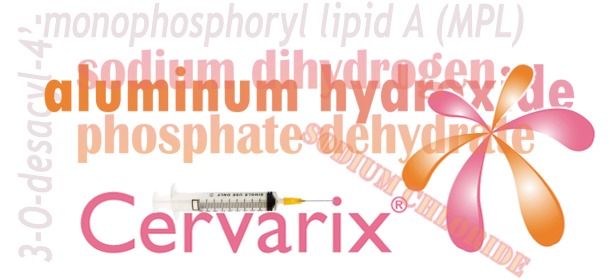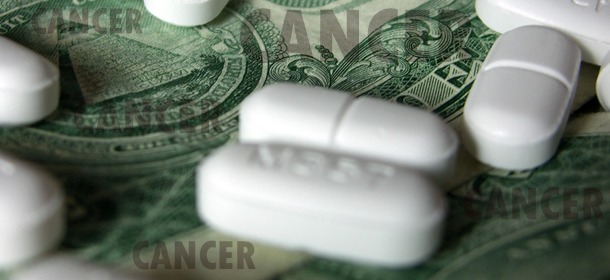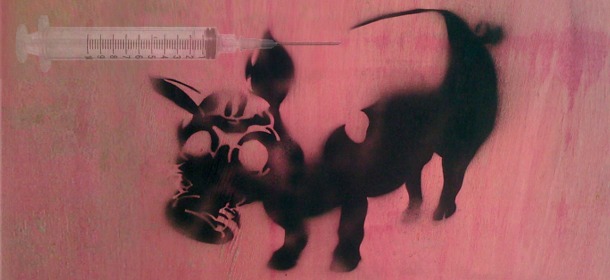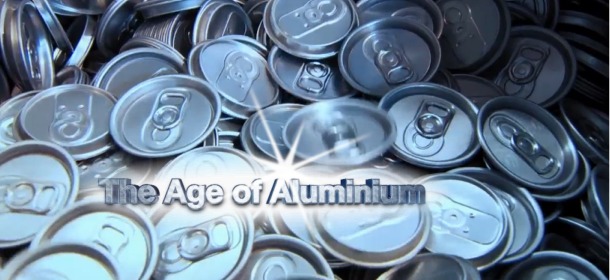Featured
Cervarix, Like Gardasil, Doesn’t Do What Was Claimed: Research
The studies produced by Cervarix manufacturer, GSK, to support its approval, clearly demonstrate that it should never have been given the green light.
The evidence presented by Merck for Gardasil’s efficacy doesn’t stand up to careful perusal1. The same is true of GlaxoSmithKline’s (GSK’s) Cervarix. Researchers Tomljenovic, Spinosa, and Shaw document how these vaccines have failed to meet their commitments2. This is what they found.
Cervarix is a vaccine, initially designed for girls around the age of puberty, to prevent cervical cancer by preventing infection with human papillomavirus (HPV) strains 16 and 18. Studies that GSK produced used the same endpoints that Merck did, development of cervical lesions. However, unlike Merck’s Gardasil studies, subjects were not included if they had existing HPV infections. As documented in the previous article1, girls who were already infected with HPV were as much at 44-45% greater risk to find their cervical disease had worsened.
There are three levels of cervical intraepithelial neoplasias (CINs): 1, 2, and 3, with 1 being the mildest. To understand the findings, it’s important to understand that CIN lesions do not necessarily develop into cancer. In fact, only 5% of HPV infections progress to CIN 2/3 lesions. And those often regress back to normal, with 68% of CIN 2 lesions regressing. Thus, fewer than 1.6% of infections lead to CIV 3 lesions, which are not cancer. Some of these can regress back to normal tissue, too.
Keep that in mind: Only a very tiny fraction of HPV infections progress to even CIV 2/3, let alone cancer. A diagnosis of HPV or even lesions resulting from these viruses is not equivalent to a future diagnosis of cancer.
Further, only about 70% of cervical cancers are associated with HPV 16/18. Therefore, it’s necessary to show that the vaccine can prevent at least 70% of cervical cancers. Otherwise, it offers no value compared to Pap screening.
Unlike Merck, GSK did provide p-values, which does indicate a degree of legitimacy of their results—but only for their pre-licensure trials. P-values are mysteriously dropped in their reports of the post-licensure trials. The confidence intervals (CI) also tend to be very wide, indicating that the given results have almost no significance.
Selected Results After 2.9 Years (Pre-Licensure)
According to GSK’s reported results after 2.9 years (pre-licensure data), vaccine efficacy for prevention of CIN 3 lesions were:
- HPV-16: 67.2% and 87.5%
- HPV-16 & 18: 80%, 90.9%, and 33.6%
- HPV-18: 100% and 100%
- Any HPV cancer-related type: 33.4% and 87.0%
The study designs were quite different. Some included women who had already been exposed to HPVs, while others did not. Those that included previously-exposed women most likely account for the poorest results.
GSK also looked at reductions in the number of colposcopy referrals and number of cervical tissue excissions after 2.9 years. Their figures showed:
- Colposcopy reductions: 10.4% and 26.3%
- Cervical tissue excission reductions: 24.7% and 68.8%
Selected Results after 6.4 and 7.3 Years (Post-Licensure)
Before looking at post-licensure results, three important points need to be noted. One is the previously-mentioned lack of p-values. The second is the relatively tiny size of the studies, all of them less than one-tenth the size of the pre-licensure studies, and some little more than 2% the pre-licensure size. Finally, the markers chosen were not the same as those used in pre-licensure studies. Significantly, CIN 3 results were not recorded.
Vaccine efficacy rates reported after 6.4 years were:
- HPV 16/18, CIN 2: 100%
- Any HPV cancer-related type, CIN 2: 71.9%
Vaccine efficacy rates reported after 7.3 years were:
- HPV 16/18, CIN 2 100%
- Any HPV cancer-related type, CIN 2: 40.6%
Unlike the early results, there were no reports of CIN 3 lesions. The authors treat that omission as indicating that there were no CIN 3 lesions to report in the post-licensure studies. Likewise, there was no reporting of reductions in colposcopies or cervical excissions made in the post-licensure data.
Meaning of the Results
It is, of course, difficult to draw any definitive conclusions from the reported results. The data are questionable because of extremely large confidence intervals (especially in the best results), lack of p-values in the longer-term trials, and the small number of trial participants in the longer-term trials.
The study documents a highly significant point about cervical cancer—that the vast majority of HPV infections and cervical lesions are cleared by the body with no resultant ill effects. GSK’s own studies, as poor as they are and obviously designed to produce the best possible results for their product, still showed that the number of cases of CIN 3 is extremely small. The number of CIN 2 cases is far lower than CIN 1 (figures not shown here) which is precisely what we’d expect if most instances of CIN 1 naturally regress. Thus, they have inadvertently helped document the fact that markers CIN 1 and 2 are meaningless in determining the vaccine’s efficacy in cancer prevention.
Though the efficacy rates for HPV 16/18 are high, we should draw little or no comfort from it. What matters is the overall efficacy rate—whether the vaccine reduces CIN lesions related to any cancer-associated HPV type at a rate high enough to justify its use.
The apparent efficacy rate of Cervarix fell sharply over time. The final efficacy rate of 40.6% in CIN 2 lesions for all HPV types is simply not enough to justify the use of Cervarix. When 70% of cervical cancers are now cured through regular screening with Pap smears, it would be necessary to bring the efficacy rate to significantly more than 40.6%. We would need to see a rate better than 70% in cancer prevention, not just CIN 2 rates, to justify such a vaccine. Clearly, Cervarix isn’t even in the ballpark. Add in the fact that Pap smears are needed just as much after the vaccine, there is no benefit whatsoever in either Cervarix or Gardasil.
Obviously, neither Cervarix nor Gardasil can be justified in terms of efficacy. Their approvals by the FDA and health agencies around the world, not to mention the pressure, and in some cases, forcing of these vaccinations, is utterly unjustified. However, the picture grows far worse, as will be exposed in the next article where the vaccines’ adverse effects are factored into the picture.
Sources:
- HPV Vaccines: Scientists Use Manufacturers’ Data to Prove Lack of Efficacy
- Human Papillomavirus (HPV) Vaccines as an Option for Preventing Cervical Malignancies: (How) Effective and Safe?
Tagged big pharma, cervarix, cervarix efficacy, cervarix pseudo science, cervarix science, cervical intraepithelial neoplasia, cin 1, cin 2, fda, glaxosmithkline, gsk, gsk cervarix, hpv-16, hpv-16/18, hpv-18, junk science, pharmaceuticals, pseudo-science, pseudoscience, science, tomljenovic shaw, vaccine, vaccines
















Pingback: Gardasil and Cervarix – what’s the controversy about the HPV vaccine? | Real Food Houston
Pingback: Nuevos estudios sobre la eficacia de Gardasil y Cervarix en la prevención del cáncer « letritasnegras
Pingback: Gardasil: Evidence of Immense Harm | Gaia Health
Pingback: Vaccination anti-HPV: gare aux accidents! | Ze Rhubarbe Blog